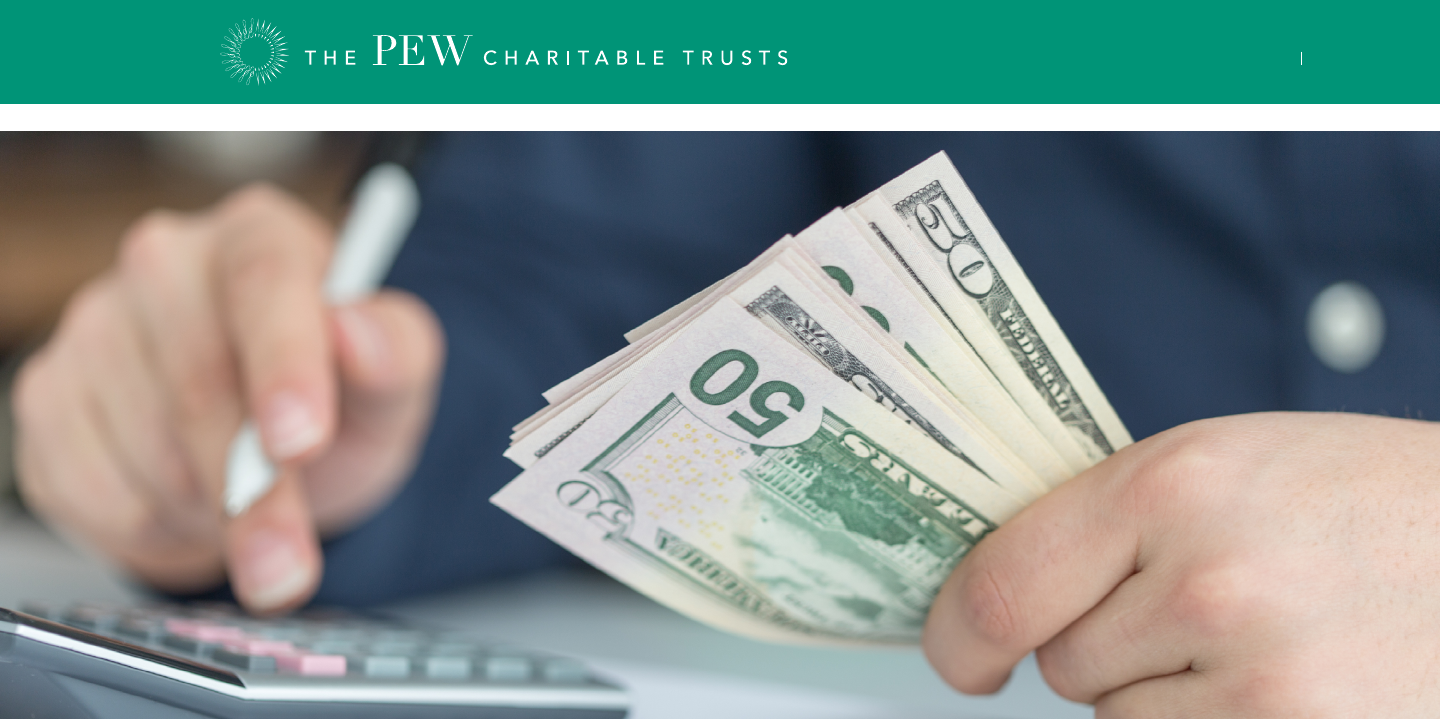
A chartbook from
April 2017
Americans Want Payday
Loan Reform, Support
Lower-Cost Bank Loans
Results of a nationally representative survey of U.S. adults
The Pew Charitable Trusts
Susan K. Urahn, executive vice president
Travis Plunkett, senior director
Team members
Nick Bourke, director
Alex Horowitz, senior ocer
Olga Karpekina, associate
Gabe Kravitz, senior associate
Tara Roche, associate manager
Acknowledgments
The project team thanks Steven Abbott, Esther Berg, Jennifer V. Doctors, David Merchant, Liz Visser, Mark Wol,
and Cliord Zukin for providing valuable feedback on the report, and Molly Mathews for project management and
web support. Many thanks to our other former and current colleagues who made this work possible.

1
Overview
Typical payday loans have unaordable payments, unreasonable durations, and unnecessarily high costs: They carry
annual percentage rates (APRs) of 300 to 500 percent and are due on the borrower’s next payday (roughly two weeks
later) in lump-sum payments that consume about a third of the average customer’s paycheck, making them dicult
to repay without borrowing again.
In June 2016, the Consumer Financial Protection Bureau (CFPB) proposed a rule to govern payday and auto title loans
1
that would establish a process for determining applicants’ ability to repay a loan but would not limit loan size, payment
amount, cost, or other terms. The CFPB solicited and is reviewing public comments on whether to include in its final rule
alternatives to this process with stronger safeguards, particularly a “5 percent payment option” that would limit installment
payments to 5 percent of monthly income, enabling banks and credit unions to issue loans at prices six times lower than
those of payday lenders at scale. As such, it would be likely to win over many payday loan customers.
2
An analysis by The Pew Charitable Trusts determined that the CFPB’s proposal would accelerate a shift from lump-sum
to installment lending but, without the 5 percent option, would shut banks and credit unions out of the market, missing an
opportunity to save consumers billions of dollars a year.
3
To gauge public opinion on various reforms, including the proposed rule, Pew surveyed 1,205 American adults and found:
• 70 percent of respondents want more regulation of payday loans.
• 7 in 10 adults want banks to oer small loans to consumers with low credit scores, and the same proportion would view
a bank more favorably if it oered a $400, three-month loan for a $60 fee (as reportedly planned).
• When evaluating a loan regulation’s eectiveness, Americans focus on pricing rather than origination processes.
• Respondents say typical prices for payday installment loans that would probably be issued under the proposed rule
are unfair.
• 80 percent dislike the proposal’s likely outcome of 400 percent APR payday installment loans with more time to repay,
but 86 percent say enabling banks and credit unions to oer lower-cost loans would be a success.
These results show that the public supports the CFPB’s actions but strongly favors allowing banks and credit unions to
oer lower-cost loans. A separate Pew survey of payday loan borrowers found similar sentiments.
4
This chartbook
delves more deeply into these findings and discusses recommended changes to the proposal, including adoption of the
5 percent payment option, which is supported by Pew as well as many banks, community groups, and credit unions.

2
70
%
More
regulated
17
%
Not more
regulated
12
%
Don’t know/
refused
70
%
More
regulated
29
%
Not more
regulated
1
%
Refused to
answer
Figure 1
7 in 10 Americans, Borrowers Want Payday Loans to Be
More Regulated
Percentage of respondents, by survey group
Notes: Respondents were read the following statement: “Now I’d like to ask you some questions about payday lending. Payday lenders are
companies that generally operate through storefronts or the internet. They make small loans, often at high interest rates that are usually due
back on the borrower’s next payday.” Then they were asked: “Which of these statements comes closer to your point of view? 1) Payday loans
should be more regulated; 2) Payday loans should not be more regulated.” Results are based on 1,205 interviews. General population numbers
do not total 100 percent due to rounding. The payday borrower data are from a separate survey of payday loan borrowers that was conducted
online, and “don’t know” was not presented as an option, though respondents could decline to answer.
Source: The Pew Charitable Trusts, “Payday Loan Customers Want More Protections, Access to Lower-Cost Credit From Banks” (2017), www.
pewtrusts.org/en/research-and-analysis/issue-briefs/2017/04/payday-loan-customers-want-more-protections-access-to-lower-cost-credit-
from-banks
© 2017 The Pew Charitable Trusts
Roughly 12 million Americans
use payday loans annually,
spending an average of $520
on fees to repeatedly borrow
$375.
5
Borrowers and the general
population support more
regulation of the small-loan
industry in equal proportions.
70
%
More
regulated
17
%
Not more
regulated
12
%
Don’t know/
refused
70
%
More
regulated
29
%
Not more
regulated
1
%
Refused to
answer
General population Payday borrowers
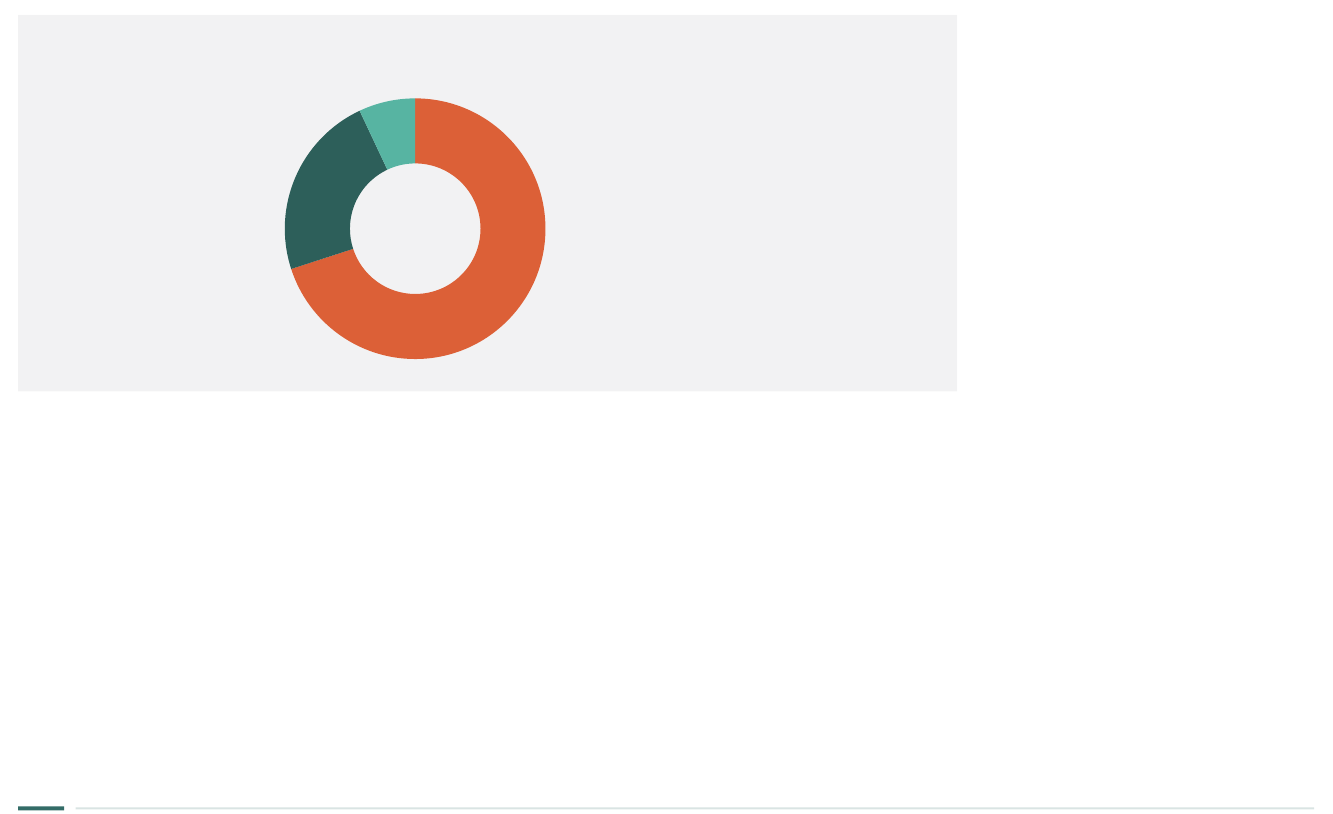
3
Figure 2
7 in 10 Americans Want Banks to Oer Small Loans to Borrowers
With Poor Credit
Percentage of respondents
Notes: Respondents were asked: “Today, banks generally do not make loans to people with low credit scores. Do you want to see banks begin
to oer small loans of a few hundred dollars to their customers who have low credit scores, or do you not want to see that?” Results are based
on 1,205 interviews.
© 2017 The Pew Charitable Trusts
70
%
Want
to see
23
%
Do not want
to see
7
%
Don’t know/
refused
Want to see banks begin to oer small loans
Banks generally cannot profitably
make loans to people with low
credit scores in the current
regulatory environment. In May
2016, American Banker reported
that at least three large banks
were planning to use the 5 percent
payment option that the CFPB
proposed in its 2015 framework to
oer such customers small loans
repayable in aordable installments
at prices roughly six times lower
than average payday loans, such as
a $400, three-month loan for a
$60 fee.
6
Most Americans would
like to see banks begin oering
these loans.
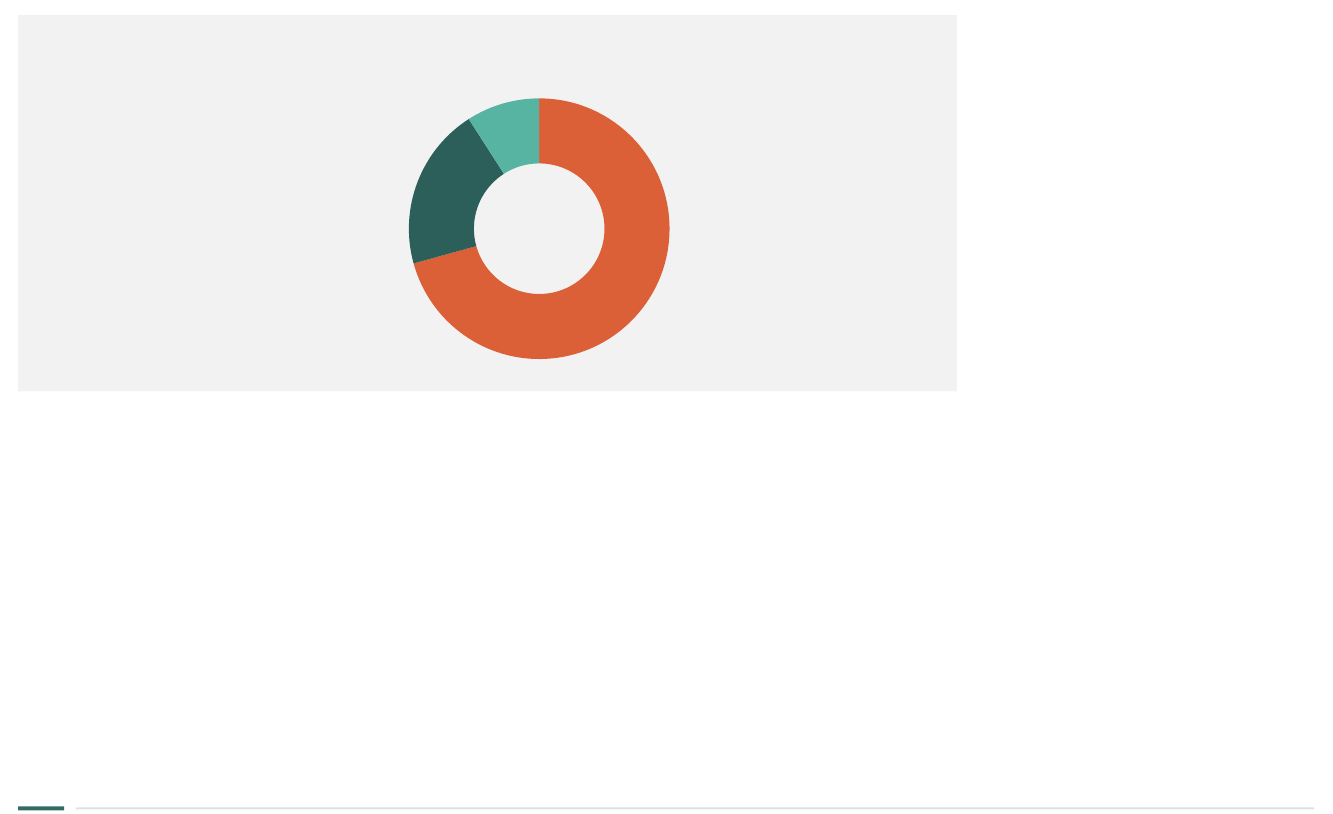
4
Figure 3
70% of Americans Would View a Bank More Favorably if It Oered
Lower-Cost Small Loans
Percentage of respondents
Notes: Respondents were asked: “Some banks are considering oering a $400, three-month loan with a $60 fee. Payday lenders charge
about $350 for the same loan, while using a credit card would usually cost less than $60. If a bank began oering a $400, three-month loan
for a $60 fee, would your view of that bank be more favorable or less favorable?” Results are based on 1,205 interviews. Numbers do not
total 100 percent due to rounding.
© 2017 The Pew Charitable Trusts
View of banks that oer small loans would be more favorable
Seventy percent of survey
respondents said they would have a
more favorable view of a bank if
it oered a $400, three-month loan
for a $60 fee (as some banks are
planning to do).
7
Banks report that
they would need to use the
5 percent payment option in order
to make these loans available.
70
%
More
favorable
20
%
Less
favorable
9
%
Don’t know/
refused
Hypothetical bank
small loan:
• $400 principal
• 3-month term
• $60 fee
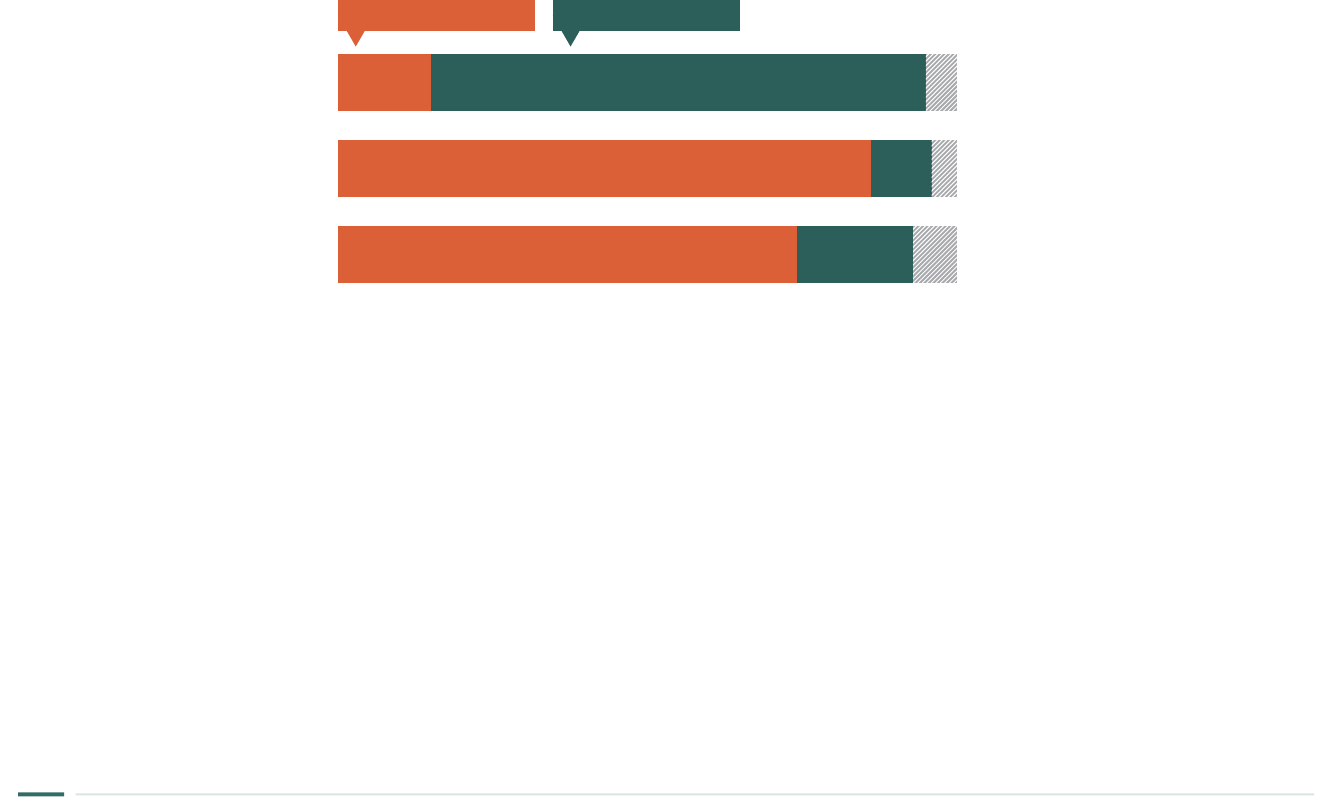
5
Figure 4
Americans Say Loans That Have More Time to Repay but Still Carry
400% APRs Would Be a Negative Outcome
Percentage of respondents in favor of each possible result
Notes: Respondents were read the following statement: “The government agency that regulates payday lending has proposed some new
regulations. I’d like to get your opinion on some of the possible outcomes of the new regulations. For each, please tell me if you would view
it as mostly a good outcome or mostly a bad outcome. a) If most people who use payday loans got more time to repay them, but the annual
interest rates continued to be around 400 percent; b) If most people who use payday loans could get loans from their banks and credit
unions that cost six times less than payday loans; c) If some payday lenders went out of business, but the remaining lenders charged less for
loans.” Results are based on 1,205 interviews. The order of these statements was randomized in the survey. Numbers do not total 100 percent
because “don’t know” and “refused” responses (indicated in gray) were omitted.
© 2017 The Pew Charitable Trusts
If most people who use payday loans got
more time to repay them, but the annual
interest rates continued to be around 400%
If most people who use payday loans could
get loans from their banks and credit unions
that cost six times less than payday loans
If some payday lenders went out of
business, but the remaining lenders
charged less for loans
15
%
80
%
86
%
10
%
74
%
19
%
Mostly a good outcome Mostly a bad outcome
The most likely outcome of the
CFPB’s June 2016 draft rule would
be to shift the market to longer-
term payday installment loans.
Similar loans today carry interest
rates of around 400 percent,
and prices would not be likely to
decline under the proposal. Most
Americans view that as a bad
outcome. If the CFPB modified
its proposed rule to include the
5 percent payment option it
featured in the 2015 framework,
banks and credit unions would
be likely to oer lower-cost loans,
creating a better alternative
for borrowers. The public
overwhelmingly said that would
be a good result.
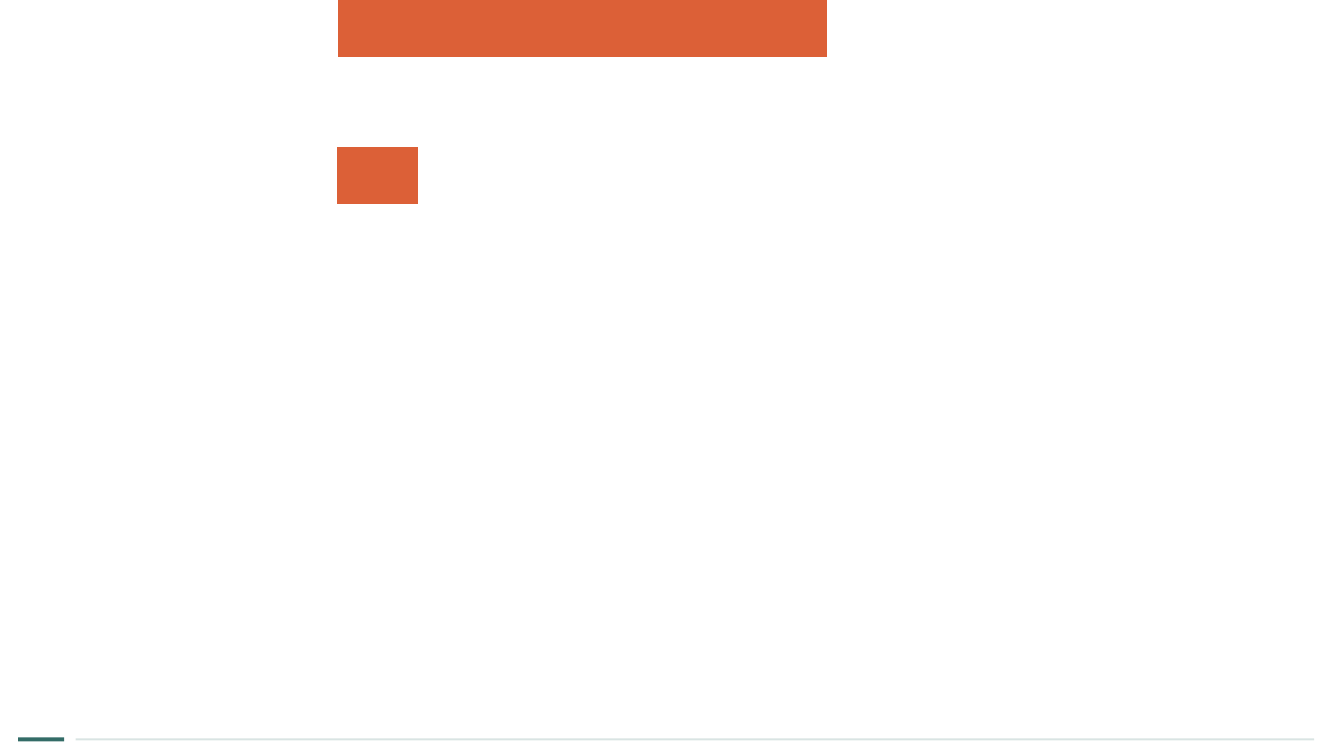
6
Figure 5
Americans Care More About Loan Prices Than Origination
Processes
Share of respondents that favors each $400, three-month loan
Notes: Respondents were read the following statement: “Here are two possible outcomes of the proposed regulations for payday lending.
Please tell me which of the two you would view as a better outcome for a $400, three-month loan: If lenders pulled borrowers’ credit reports,
estimated their expenses, and issued that loan for about $350 in fees; If lenders reviewed customers’ checking account histories and issued
that loan for about $60 in fees.” Results are based on 1,205 interviews. The order of these statements was randomized in the survey. Numbers
shown do not total to 100 percent because “don’t know” and “refused” responses were omitted.
© 2017 The Pew Charitable Trusts
If lenders reviewed customers’ checking
account histories and issued that loan for
about $60 in fees
79
%
The CFPB’s proposed rule focuses
on establishing the process that
lenders must use to originate
loans, allowing those willing to
comply with those guidelines to
charge high prices and preventing
lower-cost providers, such as banks
and credit unions, from oering
lower-cost loans at scale. If banks
are permitted to issue loans using
borrowers’ checking account
histories instead of the bureau’s
proposed ability-to-repay process,
their pricing for small-dollar loans
would be roughly six times lower
than that of typical payday lenders.
By a margin of 6 to 1, Americans
prefer the loans that would be
available from banks and credit
unions under the CFPB’s earlier
5 percent payment option to
those that payday lenders would
issue under the proposed ability-
to-repay provision.
If lenders pulled borrowers’ credit reports,
estimated their expenses, and issued that
loan for about $350 in fees
13
%
Loan likely to be issued under the 5% payment option
Loan likely to be issued under the ability-to-repay process
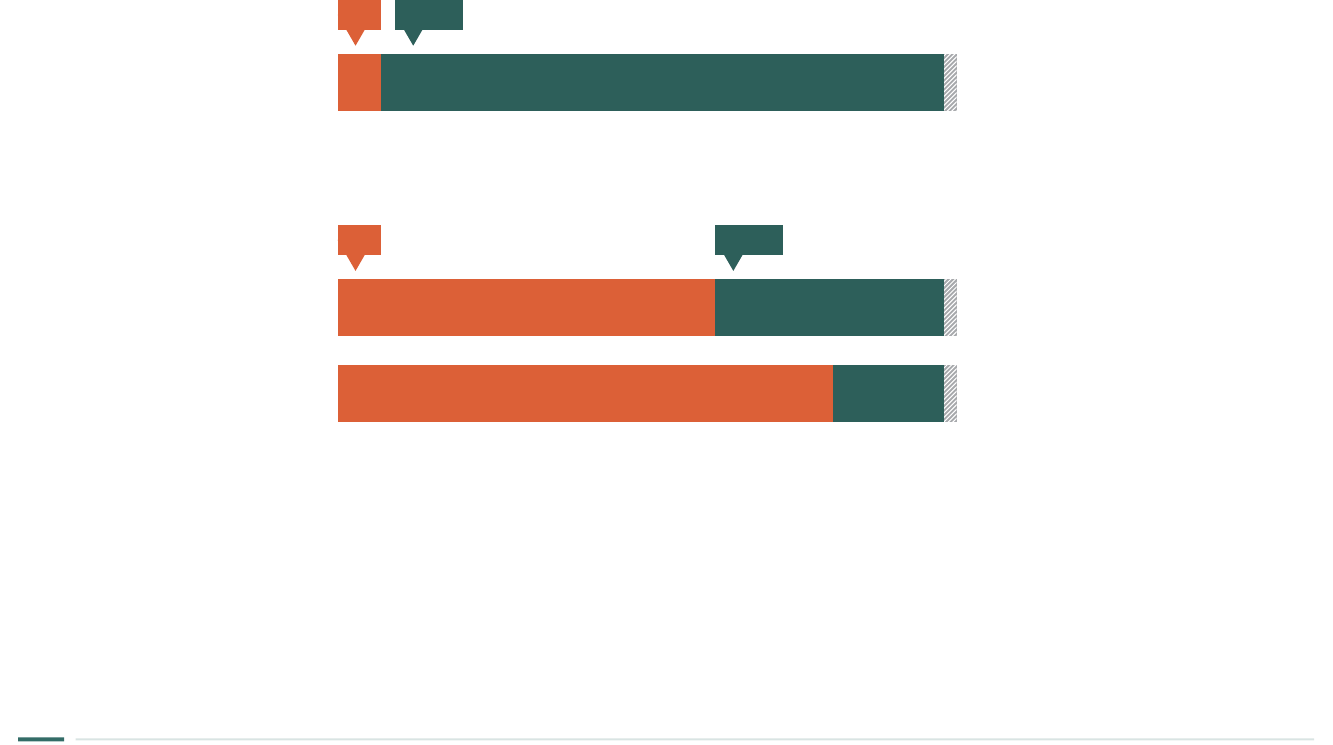
7
Figure 6
Americans Say Payday Installment Loan Charges Are Unfair but
That Planned Bank Small-Loan Prices Are Fair
Share of respondents, by loan type and terms
Notes: Respondents were read the following statement: “Here are some examples of small loans that might be available to people who have
low credit scores. For each, please tell me whether you think the terms seem fair or unfair. (Insert item.) Do you think the terms seem fair or
unfair? a) $500 for a fee of $100 paid back over 4 months, so a person who borrows $500 will pay back $600; b) $500 for a fee of $600
paid back over 4 months, so a person who borrows $500 will pay back $1,100; c) $400 for a fee of $60 paid back over 3 months, so a person
who borrows $400 will pay back $460.” Results are based on 1,205 interviews. The order of these statements was randomized in the survey.
Numbers shown do not total 100 percent because “don’t know” and “refused” responses (indicated in gray) were omitted.
© 2017 The Pew Charitable Trusts
Americans view current payday
installment loans and those likely
to be issued under the CFPB’s
proposed ability-to-repay provision
as unfair, but they say the loans
that banks and credit unions plan to
oer under the 5 percent payment
option would be fair. Banks and
credit unions have said they cannot
take on the paperwork, compliance,
and regulatory risk of the ability-to-
repay process but are interested in
oering small credit at lower prices
with stronger safeguards under the
5 percent option.
Estimated pricing for ability-to-repay payday installment loans
Estimated pricing for 5% payment bank small-dollar loans
UnfairFair
$500 for a fee of $600 paid back
over 4 months
91
%
7
%
$500 for a fee of $100 paid back
over 4 months
37
%
61
%
$400 for a fee of $60 paid back
over 3 months
18
%
80
%
UnfairFair
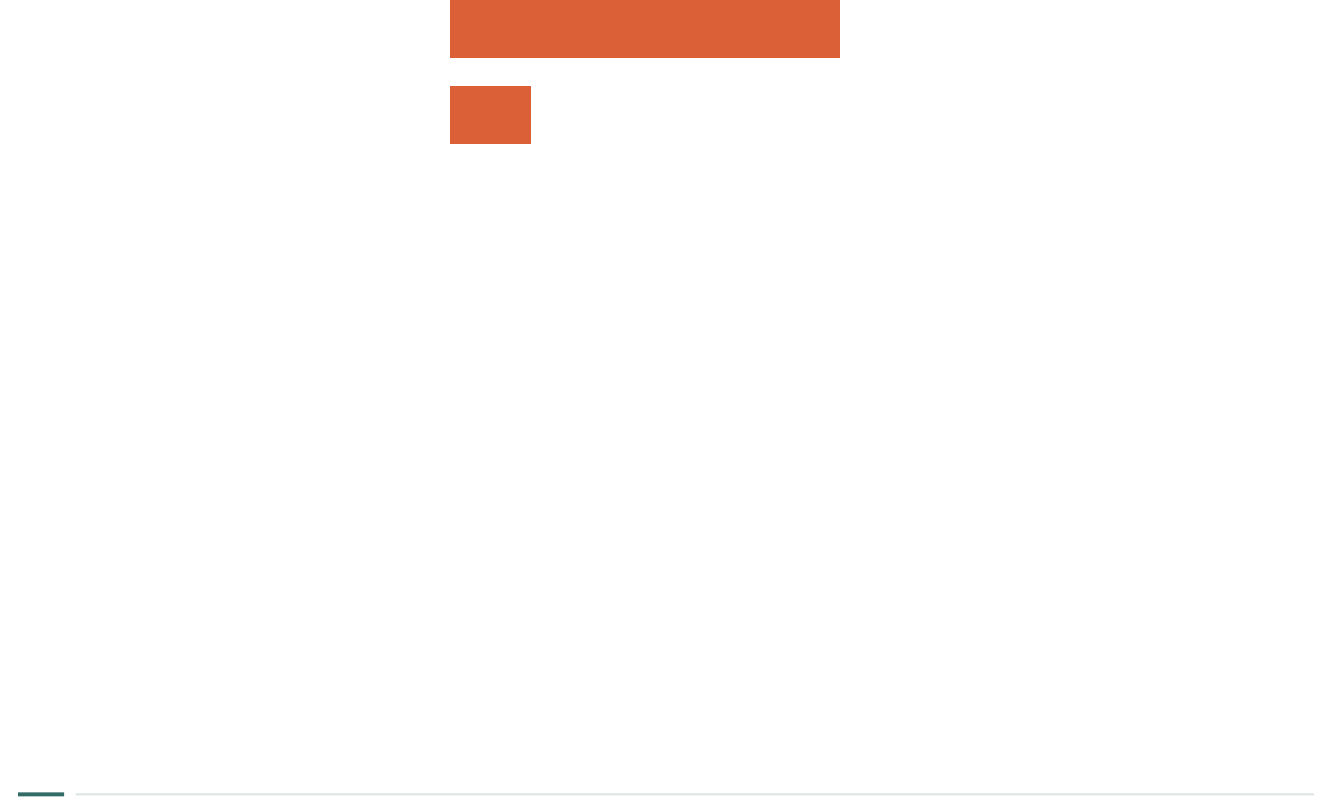
8
Figure 7
3 in 4 Americans Say It Would Be Good if Banks Oered Small
Loans, Even With Higher APRs Than Credit Cards
Percentage of respondents that agree
Notes: Respondents were read the following statement: “Here are two views regarding small loans that banks might begin oering. Please tell
me which of the two you agree with more. It would be a good thing if banks started oering small loans to their customers who use payday
loans today because the prices would be six times lower than payday loans; It would be a bad thing if banks started oering small loans
to their customers who use payday loans today because the interest rates would be higher than credit cards.” Results are based on 1,205
interviews. The order of these statements was randomized in the survey. Numbers shown do not total 100 percent because “don’t know” and
“refused” responses were omitted.
© 2017 The Pew Charitable Trusts
It would be a good thing if banks started oering small loans
to their customers who use payday loans today because the
prices would be six times lower than payday loans
It would be a bad thing if banks started oering small loans
to their customers who use payday loans today because the
interest rates would be higher than credit cards
77
%
16
%
By a margin of almost 5 to 1,
respondents said it would be a
good thing if banks began oering
small loans at prices six times
lower than those of payday lenders,
even if the rates would be higher
than those for credit cards. All
payday loan borrowers have a
checking account because it is a
loan requirement, so if these loans
became available, they would be
likely to replace a large share of
high-cost loans.

9
Methodology
On behalf of The Pew Charitable Trusts, Social Science Research Solutions conducted a nationally representative
random-digit-dialing (RDD) telephone survey of 1,205 adults Aug. 12–21, 2016. The survey included an
oversample of approximately 200 African-American and Latino respondents, which was weighted to match the
demographic incidence of the RDD sample, producing an overall sample representative of the general population.
The margin of error including the design eect is plus or minus 3.37 percent at the 95 percent confidence level.
A detailed methodology is available at http://ssrs.com/omnibus.
Endnotes
1 Proposed rule, 81 Fed. Reg. 47864 (July 22, 2016), https://www.federalregister.gov/documents/2016/07/22/2016-13490/payday-
vehicle-title-and-certain-high-cost-installment-loans. For a summary of the proposed rule, see The Pew Charitable Trusts, “How the CFPB
Proposal Would Regulate Payday and Other Small Loans: A Summary of the Draft Rule” (2016), http://www.pewtrusts.org/en/research-
and-analysis/analysis/2016/09/07/how-the-cfpb-proposal-would-regulate-payday-and-other-small-loans.
2 The Pew Charitable Trusts, “An Analysis of the Draft Rule: The CFPB’s Proposed Payday Loan Regulations Would Leave Consumers
Vulnerable” (2016), http://www.pewtrusts.org/en/research-and-analysis/analysis/2016/09/07/the-cfpbs-proposed-payday-loan-
regulations-would-leave-consumers-vulnerable.
3 The Pew Charitable Trusts, “How CFPB Rules Can Encourage Banks and Credit Unions to Oer Lower-Cost Small Loans” (2016), http://
www.pewtrusts.org/en/research-and-analysis/analysis/2016/04/05/how-cfpb-rules-can-encourage-banks-and-credit-unions-to-oer-
lower-cost-small-loans.
4 The Pew Charitable Trusts, “Payday Loan Customers Want More Protections, Access to Lower-Cost Credit From Banks” (2017), www.
pewtrusts.org/en/research-and-analysis/issue-briefs/2017/04/payday-loan-customers-want-more-protections-access-to-lower-
cost-credit-from-banks.
5 The Pew Charitable Trusts, Payday Lending in America: Policy Solutions (October 2013), 12–16, http://www.pewtrusts.org/~/media/legacy/
uploadedfiles/pcs_assets/2013/pewpaydaypolicysolutionsoct2013pdf.pdf.
6 Ian McKendry, “Banks’ Secret Plan to Disrupt the Payday Loan Industry,” American Banker, May 6, 2016, http://consumerbankers.com/
cba-media-center/cba-news/banks-secret-plan-disrupt-payday-loan-industry; Consumer Financial Protection Bureau, Small Business
Advisory Review Panel for Potential Rulemakings for Payday, Vehicle Title, and Similar Loans: Outline of Proposals Under Consideration and
Alternatives Considered (March 26, 2015), http://files.consumerfinance.gov/f/201503_cfpb_outline-of-the-proposals-from-small-
business-review-panel.pdf.
7 Ibid.
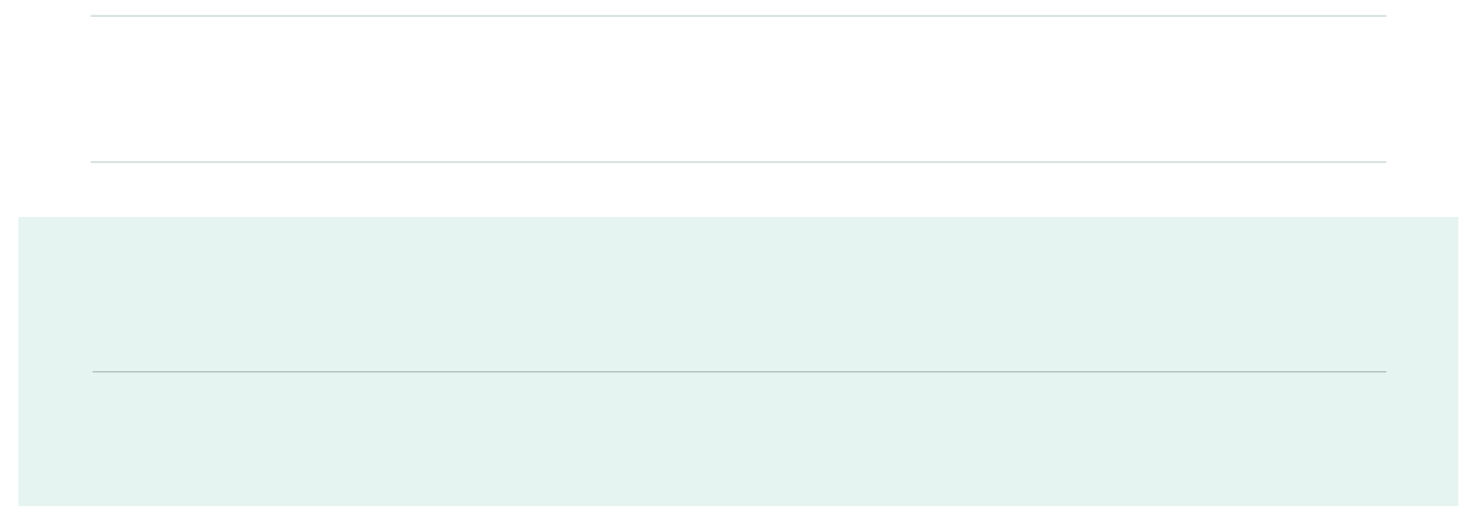
For further information, please visit:
pewtrusts.org/small-loans
Contact: Esther Berg, communications ocer
Email: [email protected]g
Project website: pewtrusts.org/small-loans
The Pew Charitable Trusts is driven by the power of knowledge to solve today’s most challenging problems. Pew applies a rigorous, analytical
approach to improve public policy, inform the public, and invigorate civic life.
